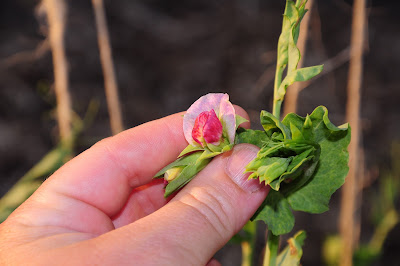For a few years now I've wanted to play around with cheese-making. I'd read that mozzarella is one of the easiest cheeses to make, but was never brave enough to try it. It didn't help that I went to a cheese-making workshop and their mozz failed.
But several times I've been in stores over the last couple of years and saw cheese-making kits - everything you need but the pan and the milk. I finally bought one, and a gallon of milk, and yesterday I attempted to make some mozz.
First, you need a steel or enamel kettle, a gallon of milk (pasteurized or raw, but NOT ultra-pasteurized), a couple measuring cups, some measuring spoons, a spoon to stir with, and a knife. (Ignore the butter and oranges - I have very limited counter space in this kitchen, so things are cluttered and crowded.)
From the kit you dissolve one -quarter table of rennet in one-quarter cup cool water and set aside. You dissolve 1.5 tsp citric acid in one cup cool water and put this in your kettle with the one gallon of milk.
You turn on the stove and start warming it up - 90 degrees F is your target, while you stir "vigorously." When you hit 90, you remove the kettle from the heat and pour in the rennet, stirring in an "up and down" motion (careful you don't end up wearing your mixture). You then cover the kettle and wait for the curds to form and the whey to separate out. This should take five minutes - I ended up waiting closer to half an hour, and it still didn't look like the photo.
Then you are supposed to use a long knife and cut the curds (mine looked more like ricotta cheese floating in yellowish water, so it didn't cut well). You put the kettle back on the stove and reheat to 105 degrees, stirring in an "up and down" fashion.
When you reach 105, you remove it from the stove and drain the whey. It was only after I had completed my cheese and was cleaning up that I remembered the cheesecloth, which was out drying on the clothesline - had to be washed first. Without this for draining the liquid from the "solids," I resorted to using a spoon and trying to pour off the whey - a lot of curds went down the drain. Lesson learned. (In my defense, the directions didn't say to use the cheesecloth for the draining.)
Here are the curds sitting separated in a bowl.
Next, you stick the bowl in the microwave for a minute, then drain off more whey. Return to microwave for 30 seconds, and start to fold the curds into a single unit of soon-to-be cheese. This is also when you add the teaspoon of salt, if you so desire. My cheese still wasn't looking very good.
I ended up doing the 30-second microwaving three times, because the recipe said it had to be 135 degrees in order to stretch properly. At this point, you are supposed to pull it like taffy. At 135 degrees, this wasn't going to happen - not without asbestos gloves! So, I just used my spoon to fold and fold the cheese, which at last was starting to look like mozz!
You then form your cheese into whatever final shape you want. I made three round balls. You plop these into a cold water bath for about five minutes.
And then you transfer them to an ice bath for about 15 minutes. This is to cool the cheese down.
My cheese was still warm when I wrapped it. One ball went into the fridge, and I had some of it this morning in my omelet, and the other two balls went into the freezer (it's supposed to freeze well).
Despite a dubious start, I'd say my first foray into cheese-making turned out well! A gallon of milk doesn't yield a gallon of cheese, but it's still cheaper than buying it in the store! And, if all goes well, it only takes about half an hour to do. I'm looking forward to my second try.
























